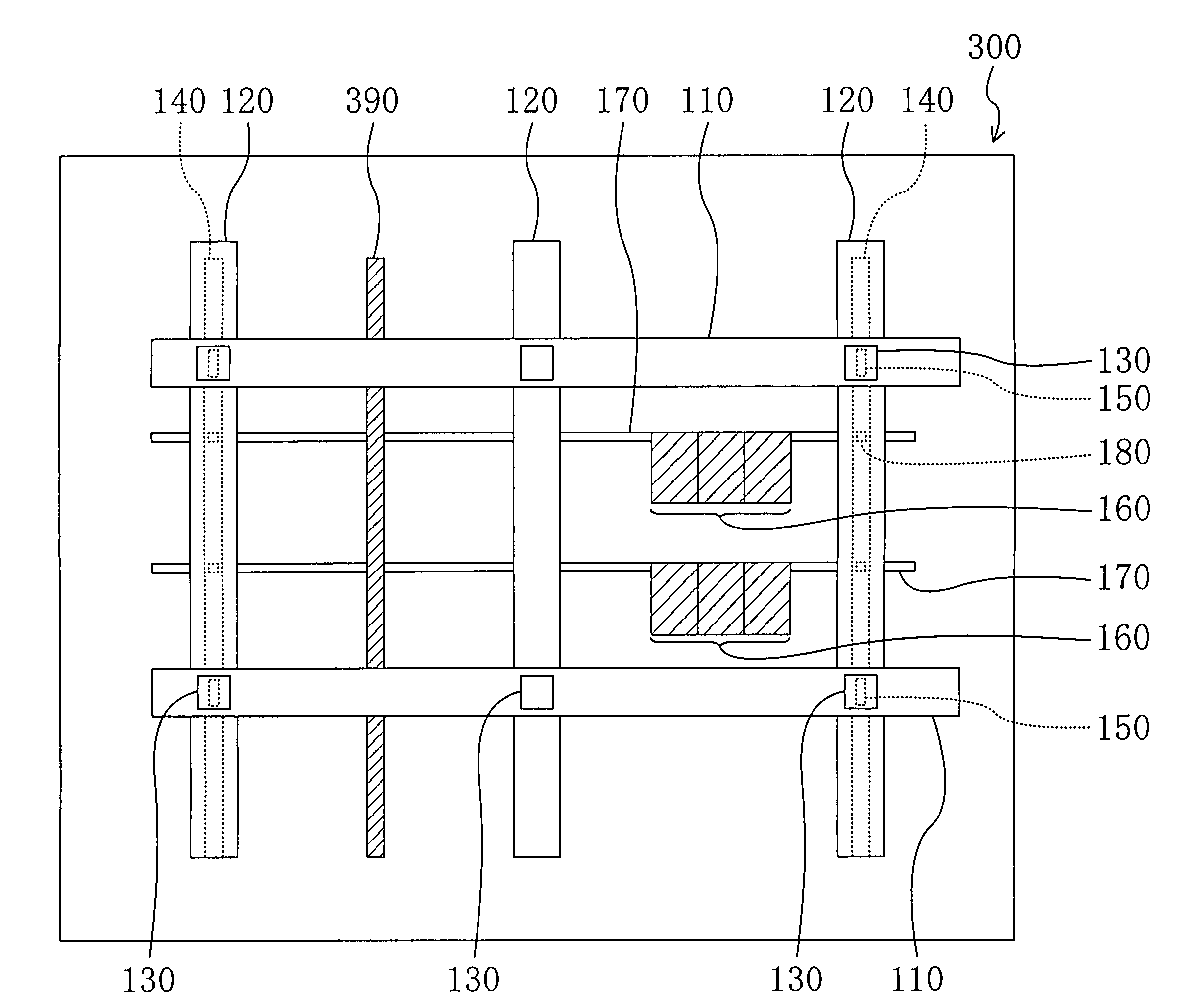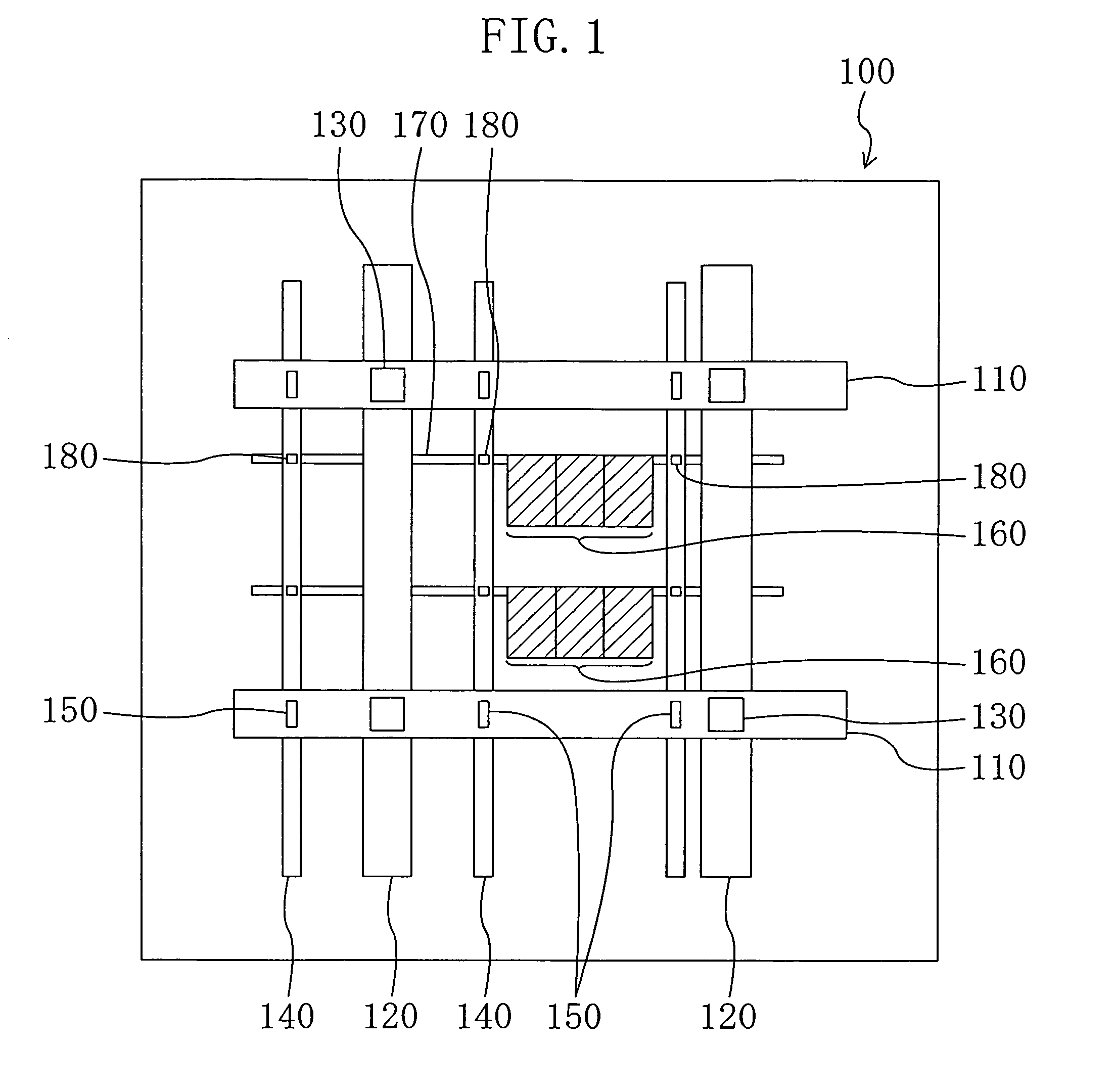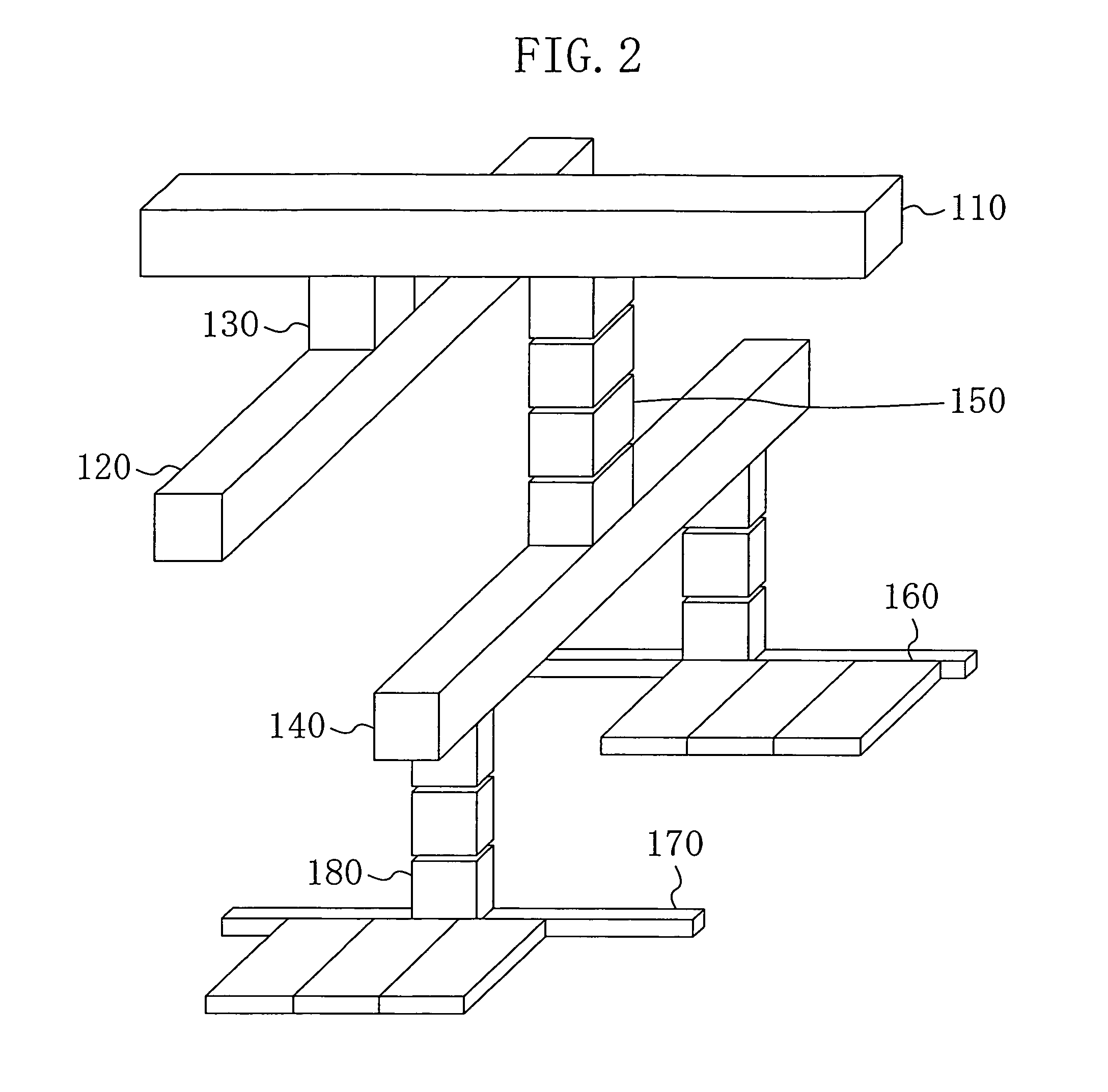Wiring structure of a semiconductor device
a semiconductor device and wiring structure technology, applied in semiconductor devices, semiconductor/solid-state device details, instruments, etc., can solve the problems of insufficient lowering of the wiring resistance of the source wiring, inability to efficiently wire singal wirings, and increase the operation delay and erroneous operation of the circuit element, so as to achieve the effect of more wiring resources for signal wiring
- Summary
- Abstract
- Description
- Claims
- Application Information
AI Technical Summary
Benefits of technology
Problems solved by technology
Method used
Image
Examples
embodiment 1
[0056]FIG. 1 is a plan view showing a construction of a semiconductor device 100 according to Embodiment 1 of the present invention.
[0057]The semiconductor device 100 has a plurality of wiring layers and includes, as shown in the drawing: a mesh-like source wiring (mesh source wiring) compose of a plurality of first source wirings 110, a plurality of second source wirings 120, and a plurality of contacts 130 for mesh source wiring; a plurality of strap source wirings 140; a plurality of contacts 150 for strap source wiring; a plurality of standard cells 160; a plurality of cell source wirings 170; and a plurality of contacts 180 for cell source wiring.
[0058]FIG. 2 is a drawing stereoscopically showing the positional relationship between the first source wirings 110 and the like. Wherein, in the following description, the wiring layer where the first source wirings 110 are formed is located on the upper side for the convenience sake.
[0059]The first source wirings 110 are formed, for ...
embodiment 2
[0074]An example is described in which the number of contacts for power supply is further reduced while the wiring resources are increased compared with Embodiment 1.
[0075]Wherein, in the following embodiments, the same reference numerals are assigned to the constitutional elements having the same functions as in Embodiment 1 and the description thereof is omitted.
[0076]FIG. 3 is a plan view showing a construction of a semiconductor device 200 according to Embodiment 2 of the present invention. FIG. 4 is a view stereoscopically showing the positional relationship of each constitutional element of the semiconductor device 200.
[0077]The semiconductor 200 is different from the semiconductor device in Embodiment 1, as shown in FIG. 3 and FIG. 4, in that the second source wirings 120 and the strap source wirings 140 are overlaid with each other when viewed from the wiring layer where the first source wirings 110 are formed and in that the contacts 130 for mesh source wiring and the conta...
embodiment 3
[0080]FIG. 5 is a plan view showing a construction of a semiconductor device 300 according to Embodiment 3 of the present invention.
[0081]In the semiconductor device 300, the strap source wirings 140 are formed so as to correspond to some of the second source wirings 120, different from the semiconductor device of Embodiment 2 in which the strap source wirings 140 are formed in one-to-one correspondence to the second source wirings 120. The number of the strap source wirings 140 formed is determined so that the value of voltage drop of the source voltage falls within a tolerable range.
[0082]With the above arrangement, the numbers of the contacts 150 for strap source wiring and the contacts 180 for cell source wiring can be further reduced compared with each of the above embodiments.
[0083]In addition, when the number of the strap source wirings 140 is determined as above, the number of the strap source wirings 140 can be reduced, increasing the wiring resources for a signal wiring 39...
PUM
 Login to View More
Login to View More Abstract
Description
Claims
Application Information
 Login to View More
Login to View More - R&D
- Intellectual Property
- Life Sciences
- Materials
- Tech Scout
- Unparalleled Data Quality
- Higher Quality Content
- 60% Fewer Hallucinations
Browse by: Latest US Patents, China's latest patents, Technical Efficacy Thesaurus, Application Domain, Technology Topic, Popular Technical Reports.
© 2025 PatSnap. All rights reserved.Legal|Privacy policy|Modern Slavery Act Transparency Statement|Sitemap|About US| Contact US: help@patsnap.com



